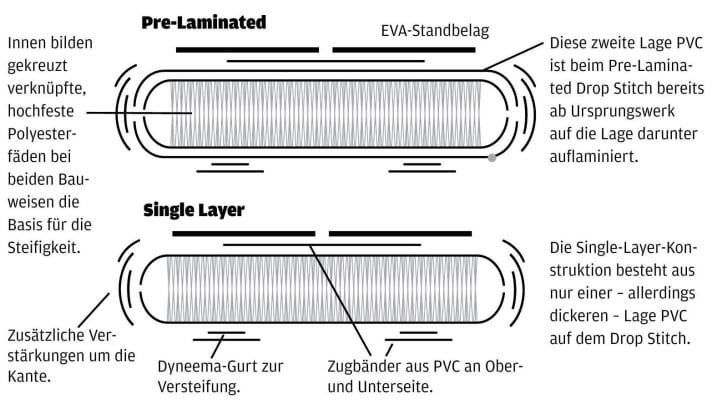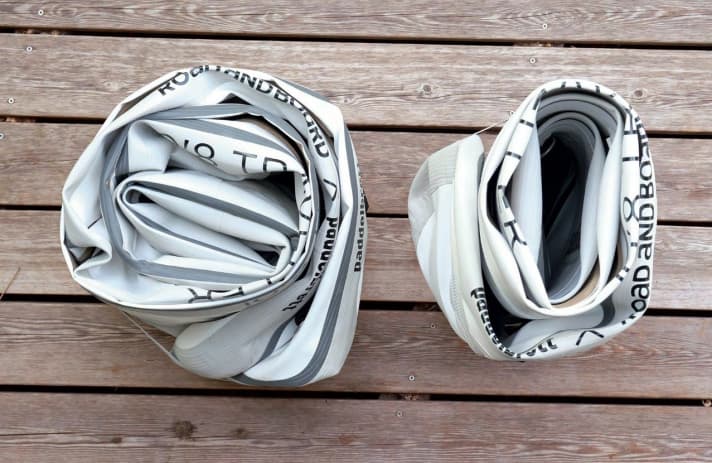Interview with developer Christoph Krahe: How a new SUP board is created
Stephan Gölnitz
· 11.09.2023






Christoph Krahe - who has already created a special board with extreme paddler Timm Kruse with the 13'8" - gives us an insight into the development process and tells us why things sometimes turn out quite differently than planned in the end.
What motivated you to develop a new model?
The wish was to achieve a smaller pack size, the suggestion came from the van life scene. I thought that a cube-shaped pack could be better positioned in a van. I also wanted the board to be lighter, so I had two prototypes built: one six inches thick and one 4.75 inches thick. I thought that I needed a six-inch board for my 105 kilos. With a length of 10'8" and a width of 34 inches, the board should run straight and yet allow two people to sit on it. The tail is also wider than usual.
Were the prototypes built the same apart from the thickness?
Basically, both prototypes are identical in terms of further construction and reinforcements. The thicker one uses a single layer dropstitch as the base, the thinner one a pre-laminated material, because I thought that I would need this for the thinner one for rigidity.
What does that mean exactly?
One layer of 0.7 millimetre thick PVC is used for the single layer. Pre-laminated refers to a construction in which two layers of 0.45 millimetre thick PVC have already been laminated together by the material manufacturer.

Some manufacturers glue another layer onto the single layer, why?
This also has to do with the desired design. I have white boards and can fall back on standard material. However, additional reinforcements are then added to further increase the rigidity and robustness.
In our test, the thinner board seemed almost stiffer. What is your verdict?
When paddling, I also had the impression that I had good stiffness under my feet with the 4.75 inch board. I didn't feel any difference. However, I found the thinner board more comfortable to paddle and steer. Surprisingly, the 4.75-inch board in the pre-laminated construction is even heavier (editor's note: we measured a difference of 1.2 kilos). In addition, the thicker pre-laminated board can't be rolled up as easily as the single-layer board. In the end, this resulted in a stalemate in my estimation.
What about the pack size?
Compared to the 11'8" paddle board, the pack size is already smaller because of the fin boxes. If you compare the prototypes and only fold one of the boards over the centre, the PVC is subjected to a lot of mechanical stress when it is rolled up, which in my opinion could lead to predetermined breaking points. In addition, the one package is then shorter, but - I have calculated this - the normal, unfolded roll has four litres less volume than the folded package, so it is easy to be deceived by the more compact-looking shape.

What happens now?
I think I will decide in favour of completely different dimensions after all, and it will be an 11'8" in pre-laminated construction in 4.75 inches. Perhaps with the split fin box, which also saves space when rolling. In any case, the folding issue is out, the risk is too great for me. We have very few complaints about our current boards, and we want to keep it that way.
